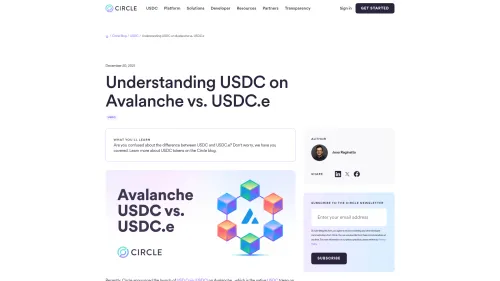Avalanche Bridged USDC (Avalanche) (USDC.E)
Avalanche Bridged USDC is a version of USDC available on the Avalanche network. This bridged USDC enables users to hold and transact with USDC on Avalanche, benefiting from faster and more affordable transactions.
Avalanche, introduced in September 2020, is a layer-1 decentralized, open-source proof-of-stake blockchain designed for decentralized applications, custom blockchain networks, and smart contracts. Its native cryptocurrency is AVAX.
USDC (USD Coin) is a stablecoin operating on the Ethereum blockchain, pegged 1:1 to the US dollar. Launched in 2018 by the Centre Consortium—an initiative backed by Circle and Coinbase—it provides a transparent and regulated digital dollar solution.
The contract address is: 0xa7d7079b0fead91f3e65f86e8915cb59c1a4c664

| Ticker | USDC.E |
| Category | Avalanche Ecosystem |
| Website | https://www.circle.com/blog/understanding-avalanche-usdc-vs.-usdc.e |
| Contract Addresses | |
|---|---|
| avalanche | 0xa7...64 Copied! Copied! |
